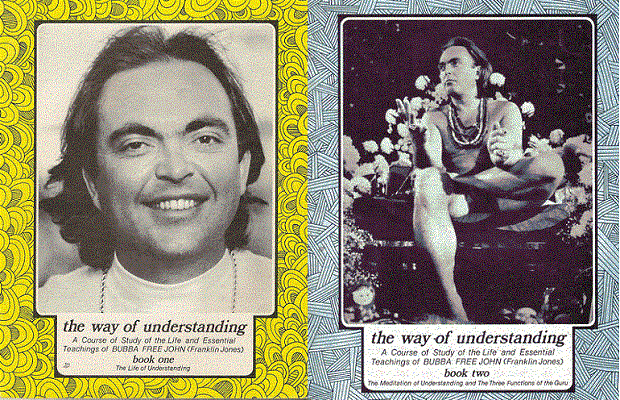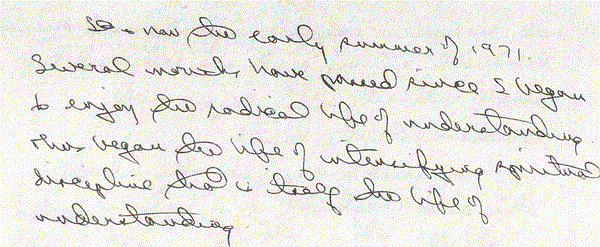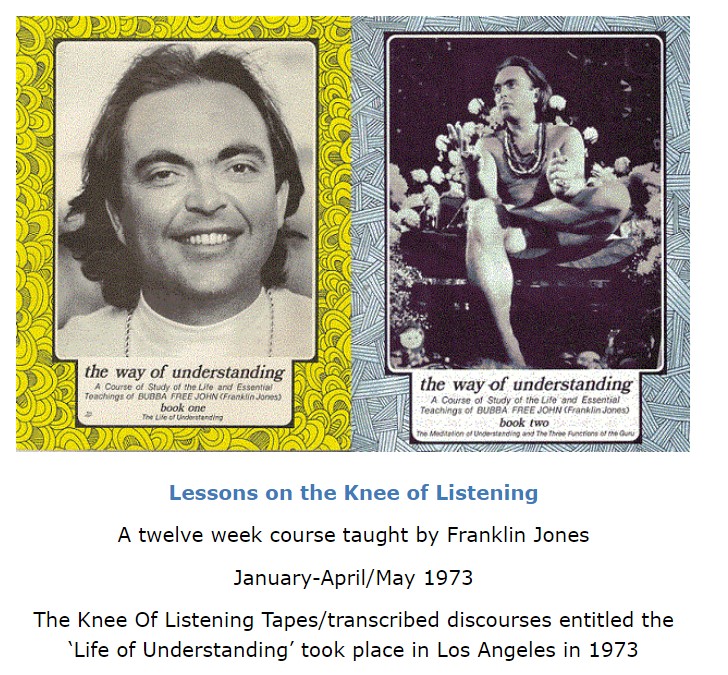“A theis and a claim, an unusual one.”

A 12 week course given by Franklin Jones (Adi Da Samraj) on ‘The Knee of Listening’ – January-May 1973
A twelve week course taught by Bubba Free John – January – April/May 1973
***
The Knee Of Listening Tapes/transcribed discourses entitled the Life of Understand took place in Los Angeles in 1973.
The following is from an early (and present) devotee, Tom Riley about the classes held.
The classes were held from January – April or so, 1973. I was fortunate to have been part of a small group invited by Beloved up to His Home @ 2509 Thames Place, Laurel Canyon, Hollywood, CA atop the Hollywood Hills. (In hindsight and thus appropriately enough, that particular section,where Beloved Resided, atop these Laurel Canyon Hills was formally named Mt.Olympus). He was otherwise not present physically at His Ashram on Melrose Ave. and we implemented, for the first time, some basic life disciplines as per his instructions to us during these every – Wednesday Night Sit – Silent Satsang, Life Discipline Instruction and The audio taped Knee Of Listening Elaboration/Discourses. The blessings, instruction and fruits of our formal spiritually – intimate time with Beloved (still Franklin Jones at this time) were communicated and brought into the general community of devotees by those of us in weekly attendence with Beloved in the living room of His Home.Each and every Wednesday evening for approximately 12 consecutive we would arrive at 7:00 p.m. sharp. Each Wednesday evening with Him consisted of Sitting In Silence with Beloved, for approximately one hour. Beloved would then instruct us on some fundamentals of Right Life Disciplines including diet, hygiene, etc and He discoursed and elaborated (the one and only time He’s ever done this w/The Knee of Listening to my knowledge) on The Knee Of Listening; His Early Life Spiritual Autobiography. The handful of us would arrive at 7:00 p.m. and leave His Residence generally somewhere between midnight and 2:00 a.m. All of this took place between January of 1973 and into April or so of same year prior to His Pilgrimmage to India in August 1973,returning to The Melrose Ashram as Bubba Free John in September 1973.

For more go to:
